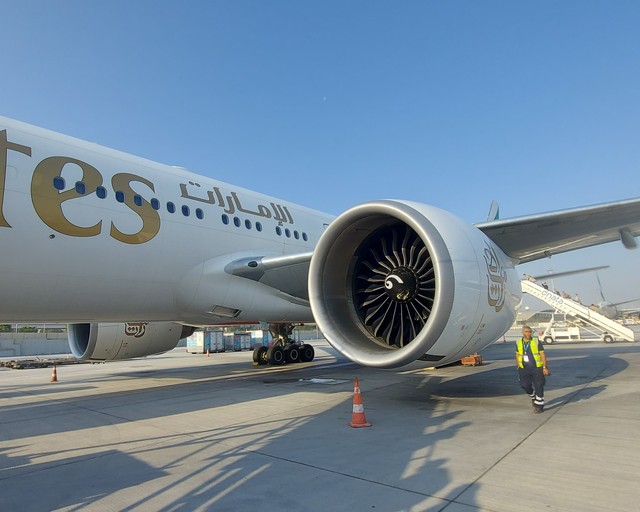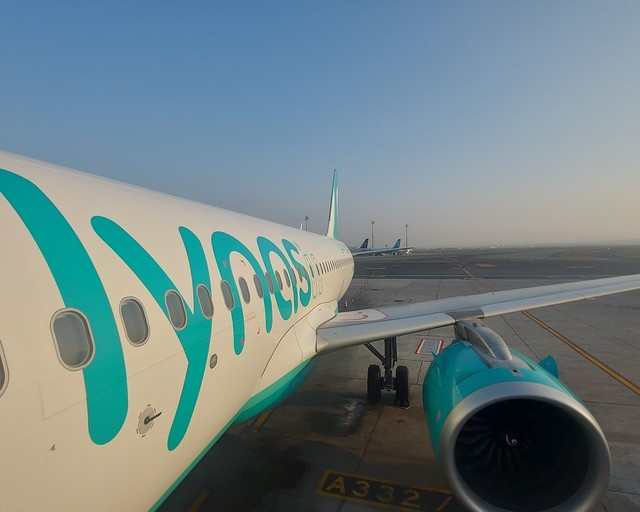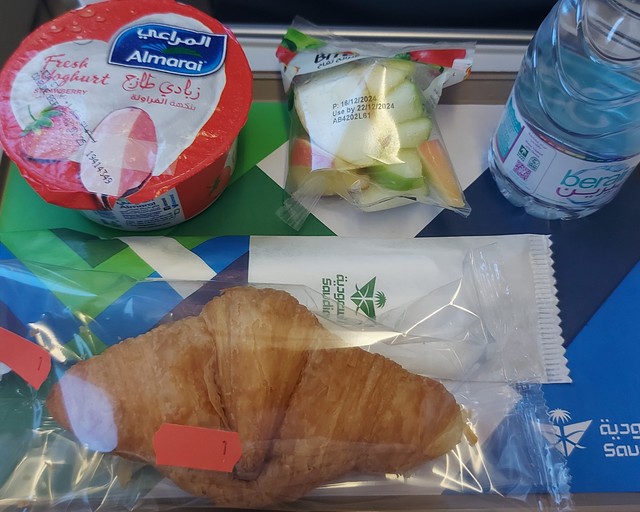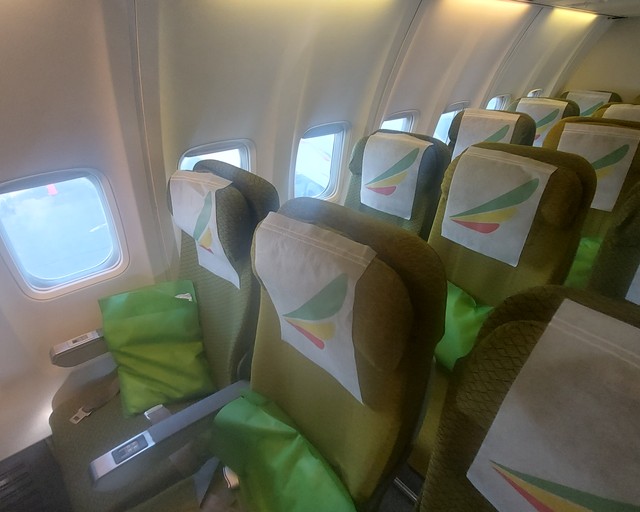We live in Iceland and we decided to go on holiday to Hokkaido, in the north of Japan. I booked our flights in September 2022, a very short time after Japan had lifted all covid related travel restrictions. I usually book my flights in two separate bookings whenever I go from Iceland to Asia: I first go to Oslo and then from Oslo to Asia. The reasons is that flights in business class from Oslo to Asia are usually much cheaper than from Iceland. But this time the price was very similar so I booked the following flights under the same booking issued on a Japan Airlines ticket:
Keflavík to London LHR, British Airways
London LHR to Tokyo HND, Japan Airlines
Tokyo HND to Sapporo CTS, Japan Airlines
Sapporo CTS to Tokyo HND, Japan Airlines
Tokyo HND to Helsinki, Japan Airlines
Helsinki to Keflavík, Finnair.
We arrived from London Heathrow to Tokyo Haneda Terminal 3. We passed immigration quickly, picked up our checked in luggage, went down to F1 (ground floor), took a free shuttle bus to terminal 1 (about 5 to 10 minute drive), checked in our luggage again and cleared security. All this took about one hour.
With about 82 direct flights a day, many of them with widebody aircrafts, the Tokyo to Sapporo route is the second busiest route in the world. It had over 10 millions passengers in 2022.
Terminal 1 is mostly used by Japan Airlines’ domestic flights.

The terminal is modern.

We went up to the lounges.

We didn’t have access to the Japan Airlines’ lounge even though we were booked in domestic business class and we were connecting from international business class. This lounge is available for passengers on JL’s domestic first class.

After a long discussion we were directed to the Sakura lounge which is available for JL’s domestic business class, premium economy and economy full fare passengers.

The lounge is huge.


It has nice views.



The choice of food and drink is extremely basic. Strawberry popcorn was the most exciting item.


The lounge has enough seating but is otherwise not worth going to.
There was a delay.

Boarding started only at 20.00. I've never seen such quick boarding at a speed of about one passenger per second.
Not many countries have widebody aircrafts on short domestic flights with both first and business class. First class has two rows in a 2+2+2 configuration with a total of 12 seats in a separate cabin. Business class has seven rows in a 2+4+2 configuration with a total of 56 seats. The business cabin is more like a good premium economy with good legroom and seat comfort. The cabin is in very good condition. Both premium cabins were full at 100%.
I had seat 9K

Legroom is good.

The cabin a short time later.

There’s a small but modern and responsive screen.

Push-back was at 20.24 for a scheduled departure of 19.45. We took off at 20.43 from runway 34R.
The screen has two great camera views.


The screen showed the weather forecast for our destination Sapporo. Fortunately it proved wrong: it was raining when we landed but not at all during our entire stay.

Flight information a few minutes after take-off.

Service started 25 minutes after take-off. There's no menu card at the seat but the cabin crew shows it for a second to each customer during service. There's only drink service. Beef consommé is also available, served in a cup (it's only a liquid, there's no meat or vegetable in it). Food is not available neither included in the price nor at an extra charge.
Skytime drink and beef consommé. JL’s signature Skytime drink was not very tasty but the beef consommé was.

The cabin later during the flight.

We landed at 21.53 and were at the gate at 21.59 for a scheduled arrival time of 21.15.
We spent about a week in Hokkaido.
Hokkaido is the northernmost main island of Japan. It has 22% of Japan's area but only 4% of its population. Hokkaido has harsh winters with a lot of snow yet it has particularly lush vegetation with huge, beautiful, untouched forests. The weather in June is perfect: the average maximum temperature is around 24°C and the air is pleasantly dry.
Sapporo is a modern city with not many monuments or other sights but it has as many restaurants and good shopping as any other big city in Japan. Restaurants in Sapporo are rarely streetfront; they're more often in basements or upper floors in office buildings or shopping malls. Many of them don't have menus in English and the waiting staff almost never speaks English. The same goes for most hotels and just about everywhere else: many people know a few basic words in English but almost nobody speaks fluently.
Japan used to be an expensive country but that has changed: thousands of restaurants offer meals for around 1050 to 1350 yen (7 to 9 €). Convenience stores that can be found at every other corner offer even lower prices. Just about everything else is relatively cheap, including petrol (150 yen or 1€ a liter).
The main attraction of Hokkaido is not Sapporo but the countryside. High mountains, beautiful lush forests and lakes are everywhere. It's quiet outside of the high season. It's a pleasure to drive around Hokkaido - I drove almost 900 kms in a few days. Do you assume that Japanese drivers follow the traffic rules to the letter? Most of them only do when they see a police car (which is not very often): a speed limit of 50 kms/h in the countryside (including in forests and other uninhabited areas) means almost all cars drive at a speed of 60 to 80 kms/h. . The absolute highlight for many visitors are the onsens. An onsen is a hot spring bath that can be in the nature or in a town (often in hotels). The water is typically around 42° C and going to the onsen is one of the most important aspects of Japanese culture.
Dance festival in Sapporo.

Sapporo’s shopping district.

Ikura (salmon caviar) is a very popular dish in Hokkaido.

Beautiful Lake Toya.

A geothermal area near Noboribetsu Onsen.

Another nearby geothermal area called Hell Valley.

A sign saying “Don’t push your child to the hot springs”

Lavender field in central Hokkaido

River Biei at Daisetsuzan National Park.

Thank you for reading my flight report.







Thank you for this flight report! It’s incredible they use a wide body for a short domestic flight whereas narrowbodies are now common for even trans-Atlantic flights. I’m sure you know this given that Icelandair primarily relies on such planes to fly passengers to the US.
Hi Hybridace101 and thank you for your comment. This is an extremly busy route and this flight was fully booked. Passengers flying only between Tokyo and Sapporo are checked in and boarded in a very efficiant way allowing a quick turnaround even for widebody aircrafts.
Hi David, thanks for sharing this FR. It’s really surprising how divergent JL and NH have become on approaching the domestic market. JL’s strategy to install these large W cabins (let’s call it what it actually is) is smart since it provides something its old J-Class failed to provide. The only issues is that people outside the market see J and expect more versus the W product it was intended to provide for domestic business travel. NH only provides 2 cabins with a real premium product to mimic the JL domestic F.
Domestic lounges in Japan are alcohol and snacks, that’s pretty much it. If you are looking for food you will always be sorely disappointed!
Hi NGO85 and thank you for your comment. JL's domestic flights are definitely for the domestic market and most passengers arefrequent travellers who know what to expect. Yes, I expected at least a quick meal on business class, especially that it was dinner time. But otherwise the seat was comfortable.
With ~350 seats across Y/W, it’s a feat they can complete a drink service on a 70 minute flight. Service on the old B773s that NH/JL operate with ~500 seats is a modern miracle.
Technically it’s marketed as Class J, not business class, but I agree that JAL needs to do a better job of setting expectations considering the historical association between the J fare class and business class.
Class J is not officially business class as previously stated, so you would not have access based on the domestic leg. The JAL website clearly indicates that international business class passengers have access to available domestic lounges on a same-day connection to a domestic flight. It should be noted that JAL brands both its international and domestic second-tier lounges as Sakura Lounges, which is absolutely not confusing at all and doesn’t give any wrong impressions about what is on offer. /s
For those who didn’t catch the joke, what it actually says is “Do not enter”/“Keep out”.
Hello and thank you for your explanations. Yes, it's called J class, which refers traditionally to business class as you say. This segment was clearly indicated as business class in our international booking. Not a big issue however as the seat was comfortable enough for such a short flight.
It seems like JAL could be keeping it 'ambiguous' on purpose. Unless one's an AVGEEK like us, they won't be expected to know that J = business class (For the record though, I tend to use C as a shorthand for business class more often). "J" could mean Japan+ class or something but there seems to be a hidden strategy behind their branding.
I tend to think about JAL's "J" class as domestic US F but with a more reasonable "premium class"-to-"regular economy" price ratio.
Thank you for your comment. I agree that JL is ambigious on purpose.